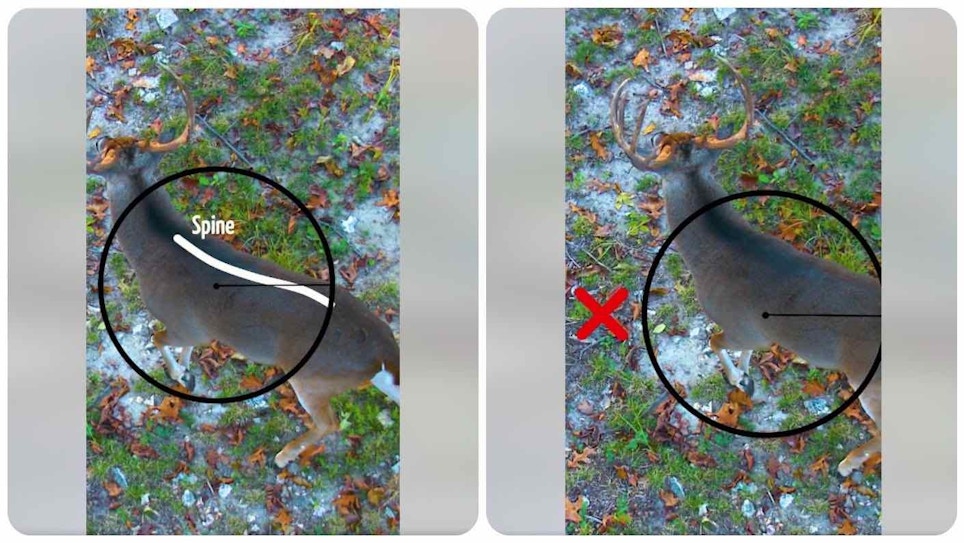In the brief Facebook video below, wildlife biologist Dr. Grant Woods explains in great detail the challenges of shooting a whitetail that is near the base of your treestand tree — in general, we’re talking distances of less than 5 yards.
The trouble is if you hit a bit too high, then your arrow will impact the deer’s spine. This will likely drop the deer in its tracks, but you’ll need to shoot a second arrow into the heart/lung area to finish off the deer. The end result is a dead animal, but as hunters we should try to do better with a single well-placed shot.
If you hit a bit too low, then your arrow will impact only one lung. You can read the 150-plus comments in Grant’s Facebook post and see that this is common — and the result is almost always bad, a lost deer.
I hit a heavy-racked South Dakota buck too low at a distance of 3 yards; I was 15 feet in a treestand. I hit where I was aiming, but I was aiming in the wrong spot. Grant begins discussing where NOT to aim at the 1:17 mark. This video triggers that close encounter in my memory. I was aiming exactly at the spot shown in the right photo above. Wrong!

My shot on the SoDak buck resulted in a single-lung hit. I waited 30 minutes, but then made the choice to pursue the buck due to a large approaching thunderstorm. I had a good blood-trail for the first 175 yards, and eventually spotted the buck — alive — bedded in thick brush. But there was no way I could slip an arrow through the brush and into the buck, even at a distance of only 12 yards. I used the noise of a nearby creek and the rain to cover the sound of my downwind approach.
As I waited for the buck to stand and step out of the brush, the wind in the river-bottom finally swirled, and the buck caught my scent and bolted from the brush, ran up a steep hill and out of the river-bottom. I searched in pouring rain for another hour before dark; no luck. I searched the river-bottom and surrounding prairie and CRP fields the entire next day; no luck. I finally found the buck the following spring while turkey hunting; he’d exited the river-bottom and bedded — and died — a half-mile away in a waist-high CRP field. I kept his rack and skull (see photo) as a daily reminder of where NOT to aim.
The best way to practice for this challenging scenario is by shooting at a 3-D deer target from an elevated position. Take your time, aim and shoot one arrow. Firing multiple arrows from this close range could easily result in broken nocks and torn vanes. Climb down from your practice treestand (or deck) and walk in front of the target; kneel on the ground and envision where your arrow would have exited a real deer. Would your arrow have caught the top of the near lung and the bottom of the far lung? That’s the goal. Only by practicing in this manner can you memorize where to aim on deer under your stand.
Video note: Click enter fullscreen and turn up the volume for best viewing.






